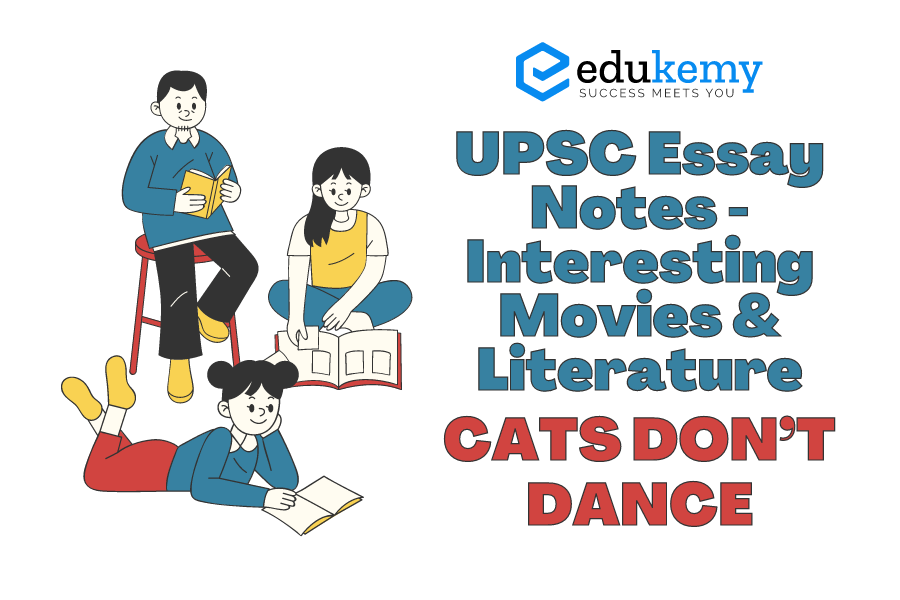
In the realm of captivating narratives, both literature and cinema offer rich tapestries of imagination and insight into the human condition. Among the myriad of tales that have graced these mediums, there exists a treasure trove of hidden gems waiting to be discovered. One such gem is the animated musical film “Cats Don’t Dance,” a delightful fusion of whimsy and depth that transcends its seemingly simplistic premise. Through its vibrant characters, catchy tunes, and underlying themes, “Cats Don’t Dance” not only entertains but also prompts contemplation on topics ranging from societal biases to the pursuit of dreams. In this essay, we delve into the nuances of this overlooked masterpiece, exploring its relevance and resonance in the broader context of literature and cinema, and uncovering the valuable insights it offers to discerning audiences.
Cats Don’t Dance is a cinematic anomaly which has so much to offer to adults who in their late twenties struggle to establish a name for themselves. Here, Danny is a young and talented cat who wishes to establish strong foundations in the silver screen industry. However, the biggest hurdle that he comes across is his own identity of being a cat. Consequently, he has to struggle before he can occupy space for himself in the industry.
It’s impossible not to notice the obvious metaphor for the problems facing minority actors here, who have always had difficulty moving beyond stereotypes onscreen. In that sense, “Cats Don’t Dance” provides a good lesson for kids, who might understand the concept of prejudice a little bit better when they view a talented but lonely piano player who can’t catch a break in the movies just because he’s an elephant.
Talented personalities such as Raj Kumar Rao and Nawazuddin Siddiqui befit this category.
Contents
- 1 Quotes
- 2 Frequently Asked Questions (FAQs)
- 2.1 1. What is the significance of incorporating movies and literature into UPSC essay notes?
- 2.2 2. How can movies contribute to essay notes preparation for UPSC exams?
- 2.3 3. What role does literature play in enhancing UPSC essay notes?
- 2.4 4. How can the movie “Cats Don’t Dance” be relevant to UPSC essay notes?
- 2.5 5. How should candidates effectively integrate movie and literature references into their UPSC essay notes?
- 3 To get free counseling/support on UPSC preparation from expert mentors please call 9773890604
Quotes
- If we all work together, we can make our dreams come true. Let’s show the world that we can do.
- But I thought Hollywood was always looking for new talent.
- You see the spotlight will never be on fellows like you and me and it’s foolish to think otherwise.
Frequently Asked Questions (FAQs)
1. What is the significance of incorporating movies and literature into UPSC essay notes?
A: Incorporating movies and literature into UPSC essay notes adds depth and diversity to one’s understanding of various subjects. Movies and literature often provide unique perspectives on social, cultural, and political issues, making them valuable sources of inspiration and insight for essay writing. Additionally, referencing these mediums showcases a well-rounded knowledge base and analytical skills, which can impress examiners.
2. How can movies contribute to essay notes preparation for UPSC exams?
A: Movies offer a visual and narrative representation of complex themes and historical events, making them effective educational tools. By analyzing movies relevant to UPSC exam syllabi, candidates can gain a deeper understanding of topics such as governance, history, and socio-economic issues. Extracting key themes, character motivations, and societal implications from films enriches essay content and demonstrates critical thinking abilities.
3. What role does literature play in enhancing UPSC essay notes?
A: Literature exposes candidates to diverse ideologies, cultures, and historical contexts, fostering empathy and intellectual growth. By engaging with literary works, candidates can explore complex human experiences, ethical dilemmas, and socio-political dynamics. Incorporating literary references in essay notes showcases linguistic proficiency, literary analysis skills, and a nuanced understanding of societal structures, thereby enriching the depth and quality of arguments presented.
4. How can the movie “Cats Don’t Dance” be relevant to UPSC essay notes?
A: “Cats Don’t Dance,” a 1997 animated film, addresses themes such as discrimination, ambition, and perseverance. It provides allegorical insights into societal dynamics, particularly relevant to topics like equality, diversity, and social justice. By dissecting the film’s narrative, characters, and underlying messages, candidates can draw parallels to real-world issues, enriching their essays with compelling examples and insightful analyses.
5. How should candidates effectively integrate movie and literature references into their UPSC essay notes?
A: Candidates should strategically select relevant movies and literary works that align with UPSC exam syllabi and essay topics. They should thoroughly analyze chosen materials, identifying key themes, character arcs, and socio-cultural contexts. Incorporating concise yet profound insights from movies and literature strengthens arguments, enhances essay coherence, and captivates examiners’ attention. Moreover, candidates should ensure proper citation and contextualization of references to demonstrate academic integrity and depth of understanding.
To get free counseling/support on UPSC preparation from expert mentors please call 9773890604
- Join our Main Telegram Channel and access PYQs, Current Affairs and UPSC Guidance for free – Edukemy for IAS
- Learn Economy for free- Economy for UPSC
- Mains Answer Writing Practice-Mains Answer Writing
- For UPSC Prelims Resources, Click here


